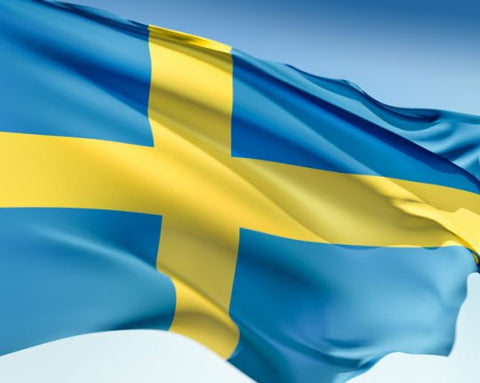Heraldry in Sweden Part 4

 With the decree known as the “Alsnö stadga” king Magnus Ladulås (1275-1290), coat of arms left, gave tax-exemptions to anyone who were in lieu of knight service. This is the first step towards nobility in Sweden. Any commoner who showed up at the annual visitation with sword and shield on a charger were freed from taxes. At this time the first document with the title knight emerges. Less than some 500 knights are known from 1278 to 1521. From the 13th century there are only arms of the high nobility that are known to us and in the early 14th century the lower nobles starts using heraldic achievements. Worth pointing out is the fact that this is during the same period that burghers and priests begin using arms. Although there is very poor knowledge of tournaments in Sweden, we do know that they took place from the mid 13th century, less which took part and there are no recollection of any heralds at all. Minstrels are frequently mentioned in 14th century chronicles and they might have had the same duties as the English 13th century heralds. There is only one herald known to us and his name was Simon and was probably introduced between 1416 and 1418. Before this period charters of nobility never included coats of arms as they always did after this period and onwards if the nobleman were given hereditary tax-exempt.
With the decree known as the “Alsnö stadga” king Magnus Ladulås (1275-1290), coat of arms left, gave tax-exemptions to anyone who were in lieu of knight service. This is the first step towards nobility in Sweden. Any commoner who showed up at the annual visitation with sword and shield on a charger were freed from taxes. At this time the first document with the title knight emerges. Less than some 500 knights are known from 1278 to 1521. From the 13th century there are only arms of the high nobility that are known to us and in the early 14th century the lower nobles starts using heraldic achievements. Worth pointing out is the fact that this is during the same period that burghers and priests begin using arms. Although there is very poor knowledge of tournaments in Sweden, we do know that they took place from the mid 13th century, less which took part and there are no recollection of any heralds at all. Minstrels are frequently mentioned in 14th century chronicles and they might have had the same duties as the English 13th century heralds. There is only one herald known to us and his name was Simon and was probably introduced between 1416 and 1418. Before this period charters of nobility never included coats of arms as they always did after this period and onwards if the nobleman were given hereditary tax-exempt.As the higher nobility adopted their own coats of arms there are only the members of the lower noble class that were granted charters including arms. The first known charter depicting a coat of arms are dated 1420. We also know that several of the older low nobilities changed their arms during the 15th century. Civic arms are known since 1247 for the city arms of Kalmar. Soon after we can find arms for the cities of Stockholm, Skara and Örebro in numerous documents
.



